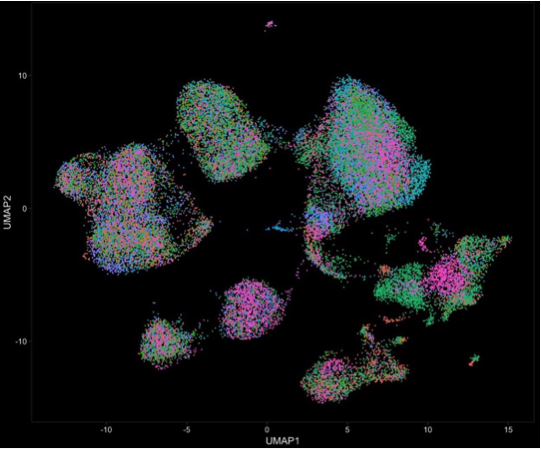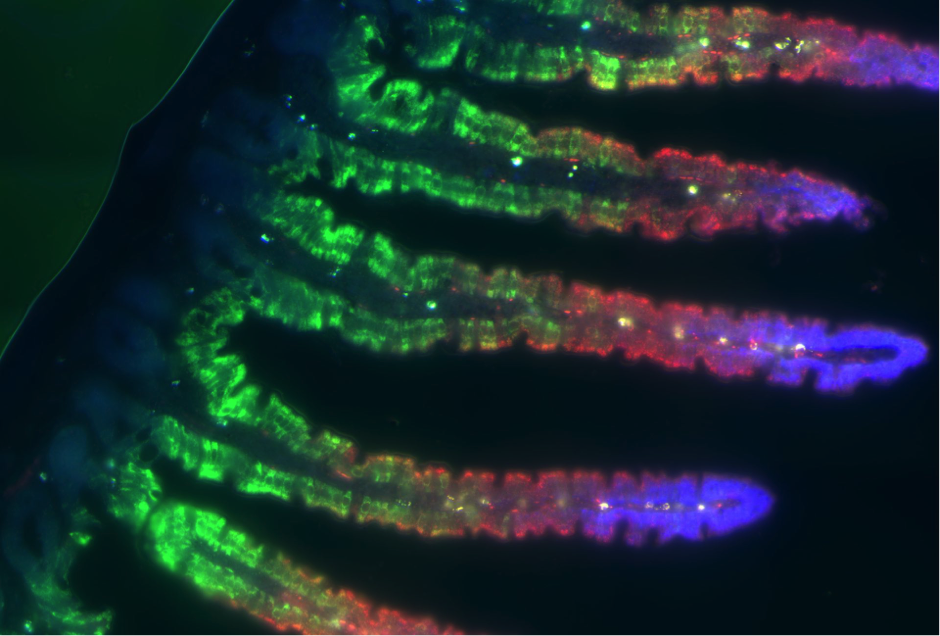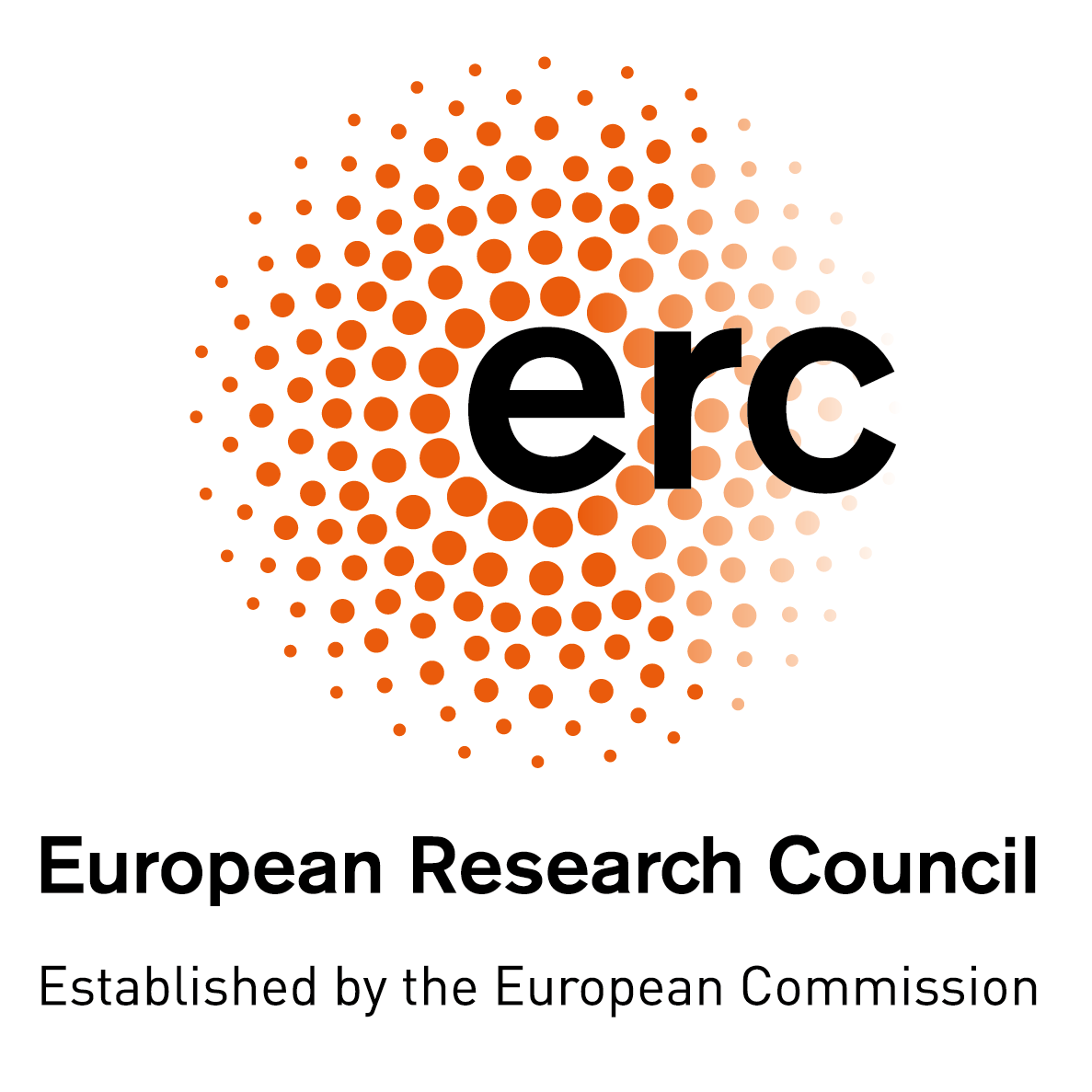Research

The Laboratory of Systems Physiology conducts interdisciplinary research at the nexus of physiology, oncology, and immunology, with an emphasis on advanced technological applications and translational research. Our primary research areas span intestinal physiology, colorectal cancer, liver metastases, pancreatic adenocarcinoma, lymphoma, and inflammatory bowel disease.
Central to our work is the exploration of how single cells collaborate within tissues to fulfill their collective functions. Understanding the intricate interactions among tissue components is vital for advancing our knowledge of normal homeostasis and pathophysiology. Disruptions in these cellular interactions could lead to diminished tissue functionality or the development of diseases, including cancer.
Our research investigates not only the interactions across historically defined cell types but also the significant heterogeneity within cell types and even within the cytoplasmic compartments of polarized single cells. We employ quantitative approaches to study this cellular and subcellular heterogeneity, ensuring the preservation of spatial tissue context.
We utilize a diverse array of models, including in vitro and in vivo systems, clinical samples, mouse models, cell lines, and organoids. Our methodologies are broad and include single-cell and spatial transcriptomics, which are supported by robust computational analysis, molecular biology techniques, AAV-mediated gene delivery, organoid cultivation, and proximity-labelling. These methods enable us to delve deeply into complex biological processes and significantly contribute to our understanding of various diseases.
Collaboration is a cornerstone of our research and involves partnerships with researchers and clinicians from both Switzerland and international institutions.
Research interests
Advancing single-cell transcriptomics
Another research branch of the SyPhy Lab stems from our ingrained skills and affinity for single-cell transcriptomics. We continuously aim to refine and update our experimental and computational approaches in this field and have ventured into sequencing-based multi-omics (such as CITE-seq or ATAC-seq). Our goal is to leverage these advanced techniques to explore a wide range of novel aspects of cellular biology in both murine and human models.

One of our key achievements in this field includes our combination of spectral flow cytometry with single-cell RNA sequencing, applied to identifying and characterizing SARS-CoV-2-specific T and B cells from human blood. In collaboration with the Boyman Lab at the University Hospital Zurich, this allowed us to provide new insights into memory cell fate and plasticity following natural infection or immunization (external page Zurbuchen et al. 2023; external page Adamo et al. 2022). In another fruitful collaboration with the Arnold Lab at the University of Zurich, we optimized the isolation and single-cell capture steps of tissue eosinophils, leading to the first comprehensive single-cell transcriptomic description of this cell type (external page Gurtner et al. 2023). This led to the discovery of previously unidentified active eosinophil subsets in the gastrointestinal tract, which enhances our understanding of the immune system's response to infections and treatments, and also opens up new possibilities for targeted therapeutic interventions.
Cellular interactions in cancer - Uncovering New Targets and Biomarkers
Tumors are not a homogenous mass of cells but consist of heterogeneous tumor cell types, invading immune cells and connective tissue. The last years have brought promising therapies that act on infiltrating immune cells in tumors. However, we are still lacking a detailed understanding of all the interactions that occur among different individual cells within a tumor. Conventional analysis methods of bulk samples are blind to cellular heterogeneity and spatial tumor information, which is a major obstacle in the field.

At the core of many ongoing projects in the Moor Lab is the quest to uncover novel targets and biomarkers across various oncological diseases. Our approach often embodies a 'bedside-to-bench-to-bedside' methodology, starting with patient materials. This approach leads to exploratory studies aimed at uncovering findings with translational potential. Alongside these patient-driven projects, the creativity and innovation of our researchers play a pivotal role. A prime example is the project spearheaded by Costanza Borrelli, who has designed an innovative combination of proximity-mediated niche labeling and in vivo CRISPR screening (external page Borrelli et al. 2023). This method uncovered previously unrecognized mediators of metastatic seeding in the liver and may lead to exciting new therapeutic strategies.
In general, our projects frequently focus on cell-cell interactions and the ligand-receptor interactions that define them. We strive to push boundaries and think outside the box, continually seeking novel insights and methodologies that can advance our understanding of cancer and lead to impactful therapeutic innovations.

RNA localization in epithelial cells in health and disease
One of our main areas of interest is advancing the understanding of RNA localization, a critical process in cellular biology that involves the precise distribution of mRNAs within cells. This phenomenon, observed in various cell types and species, contributes to regulating local protein synthesis and abundance in specific cellular regions, thereby influencing cellular function and tissue health. The SyPhy Lab`s research builds on foundational studies from Prof. Moor`s past research, which mapped RNA distribution in mammalian epithelial cells (Moor et al. external page 2018, external page 2017). We are now focused on deciphering the sequence-specific mechanisms of RNA localization and its impact on tissue function and disease, particularly within the intestinal epithelium. To achieve these goals, we employ cutting-edge techniques like single-molecule fluorescence in situ hybridization (smFISH) and multiplexed error-robust fluorescence in situ hybridization (MERFISH), along with other advanced technologies. These methods allow us to visualize and quantify RNA localization with high precision, enhancing our understanding of its regulatory role in cellular physiology. Our current projects involve developing and applying these technologies in different models to explore the dynamics of RNA localization and its potential link to cellular phenotypes and tissue health.












